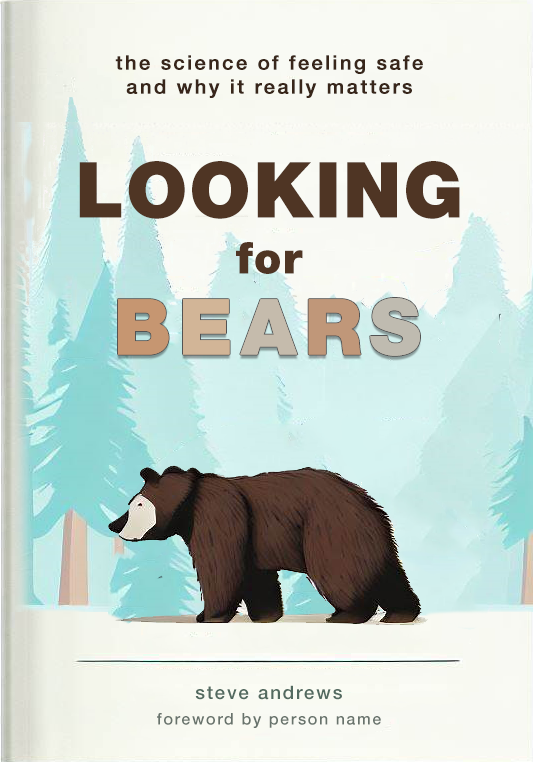
The Book
This page contains pre-release information and is subject to change.
Sign up for our newsletter to get progress updates about the book.

Looking for Bears
The Science of Feeling Safe and Why It Really Matters
An enlightening and transformative exploration into the profound significance of felt safety for our emotional wellbeing and ability to flourish. In this book, the author shares a compelling personal journey of healing and growth, combined with cutting-edge research and science from esteemed experts, to shed light on the powerful impact of our early childhood experiences on our brain development and behaviors throughout adulthood.
The book begins by introducing readers to foundational neurological concepts, providing a deep understanding of how our nervous system responds to perceived threats and opportunities in our environment. By delving into these concepts, readers gain insights into why they may feel safe or unsafe in various situations, and how past experiences of unsafety can dysregulate and even rewire their nervous systems. Equipped with this knowledge, readers are empowered to explore practical strategies for regulating their nervous system, fostering a sense of calmness and connection, and extending this support to others.
Continuing the journey, the book explores the author's novel Neuro-Social Model of Emotional Wellbeing, which encompasses the multidimensional aspects of safety and highlights their profound impact on our overall health, relationships, and quality of life. Through thought-provoking insights, compelling examples, and contemporary research, readers gain a deep appreciation for the protective mechanisms their brain constructs in response to childhood unsafety. From codependency and emotional avoidance to controlling behaviors and maladaptive attachment styles, the book reveals how these mechanisms once served a valuable purpose but have become unhelpful and even detrimental in adulthood. Practical guidance and insights are offered to replace these patterns with healthier coping skills, facilitating personal growth and lasting transformation.
The book concludes by presenting real-life examples and insightful case studies that demonstrate the application of the Looking for Bears principles in different settings and challenges. From nurturing safety at home and in educational environments to fostering healthier workplace dynamics, readers are empowered to implement the science of felt safety in their daily lives. Moreover, the book invites readers to shift their perspective on their own emotions and behavior, emphasizing the importance of our relationship with ourselves. By embracing these qualities, readers cultivate a kinder and gentler approach towards themselves and others, fostering a nurturing environment grounded in a scientific yet approachable understanding.
Filled with captivating stories and relatable examples, "Looking for Bears" challenges prevailing beliefs and dispels common myths surrounding safety to foster cooperation, collaboration, generosity, and creativity in everyone. Rooted in scientific research, this book serves as a beacon of hope and empowerment for individuals seeking to rediscover their inner bears and embrace a more fulfilling and meaningful life.
The defining aspect of a civilization is how well it cares for the welfare and wellbeing of all its members.